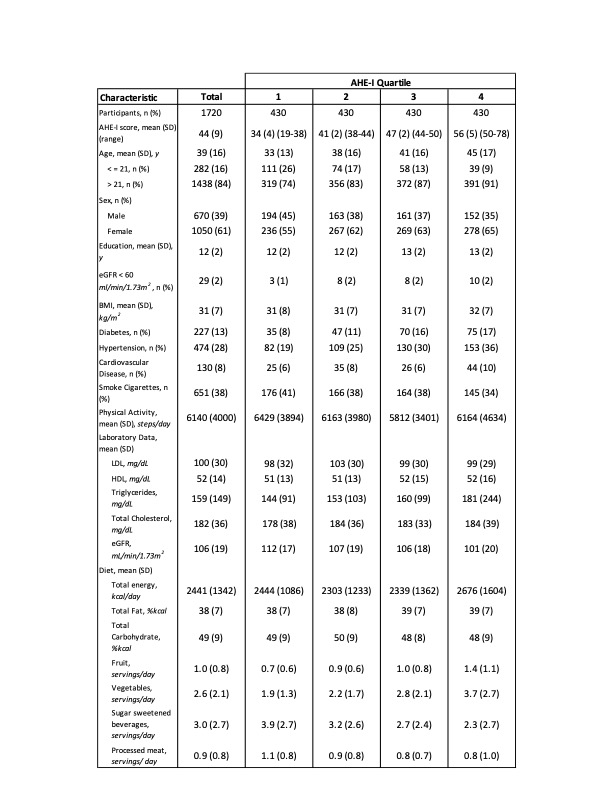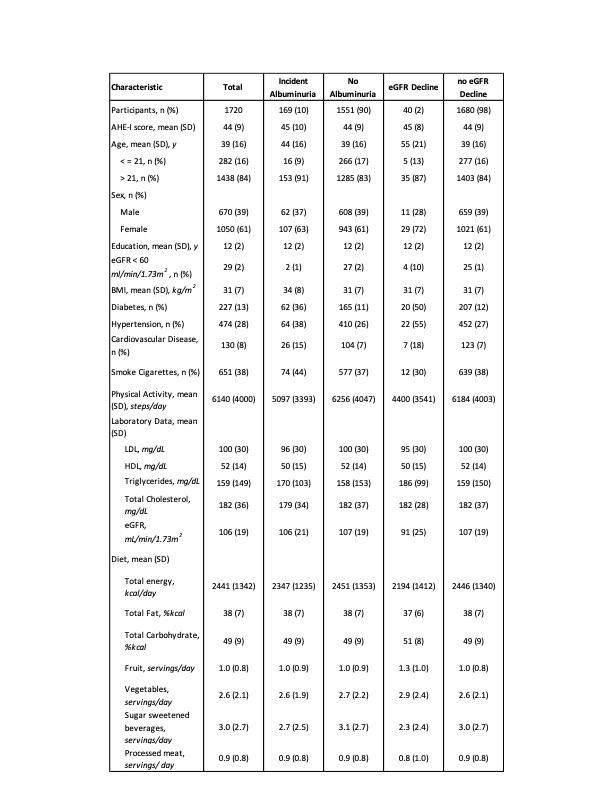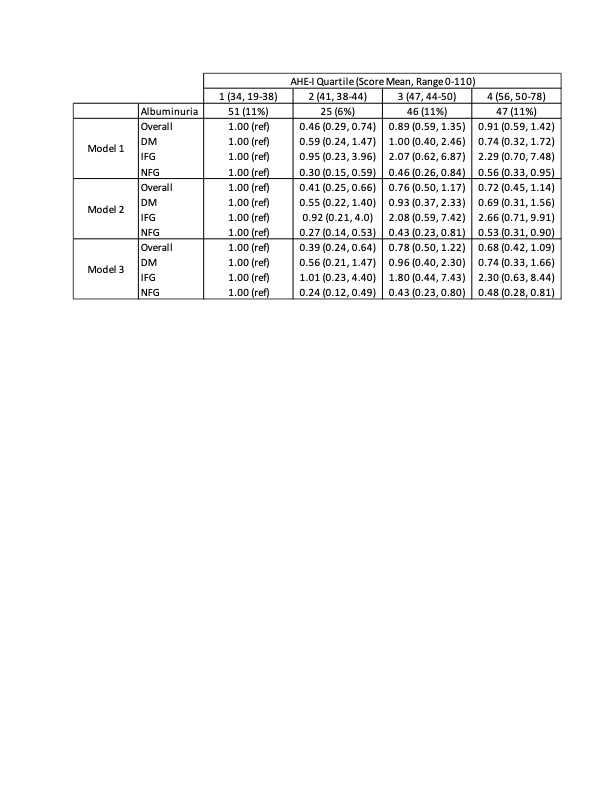Nephrology: Clinical
Nephrology 3: Dialysis and Diversity and Equity in Kidney Health
277 - Diet Quality and Kidney Outcomes in Adolescent and Adult American Indians: The Strong Heart Family Study
Publication Number: 277.252

Reya H. Mokiao, MD, MS (she/her/hers)
Acting Assistant Professor
University of Washington School of Medicine
Seattle, Washington, United States
Presenting Author(s)
Background:
Diet quality is a potentially modifiable chronic kidney disease (CKD) risk factor and may contribute to the disproportionate burden of CKD among American Indians (AIs). To our knowledge, there are no studies examining the relationship of diet quality and kidney outcomes among AI adolescents or young adults.
Objective:
We examined the relationship of diet quality with kidney injury and function among AIs who participated in the Strong Heart Family Study. We hypothesized that participants who consumed healthier diets had lower odds of incident albuminuria and eGFR decline when compared to participants who consumed less healthy diets.
Design/Methods:
The study population included participants from the Strong Heart Family Study, a longitudinal study of cardiovascular disease among AIs from 12 tribes (n=1720, age 39 ± 16 years, 61% female, 16% adolescents at baseline, 13% with diabetes, 65% with normal fasting glucose). Participants completed baseline (2001-2003) and follow-up (2007-2009) exams. The primary exposure was diet quality, expressed as the Alternative Healthy Eating Index 2010 (AHEI), on a 110-point scale (assessed using a 119-item Block food frequency questionnaire). The primary outcomes were: 1) incident albuminuria (albumin to creatinine ratio 30mg/g or greater); 2) eGFR decline of 30% or greater. Generalized estimating equations were used to examine the association of AHEI (quartiles) with incident albuminuria. Results were stratified by glycemic status due to significant interaction. We were unable to analyze data stratified by age (e.g., analysis of adolescents only) or assess the eGFR decline outcome due to small sample size.
Results:
10% of participants (6% of adolescents) had incident albuminuria and 2% of participants (2% of adolescents) had eGFR decline of 30% or greater. Adolescents had a mean AHEI score of 41 (44 for the entire cohort, range: 19-78), with 39% of adolescents in quartile 1 (least healthy diet) and 13% in quartile 4 (healthiest diet). In the entire cohort, among participants with normal fasting glucose levels, the odds ratio (OR) for incident albuminuria comparing healthiest versus least healthy [reference] quartiles of diet quality was 0.48 (95%CI 0.28, 0.81) after adjustment for potential confounders.
Conclusion(s):
Diet quality was low, especially among adolescents. Rapid eGFR decline was uncommon among AI adolescents or adults. For AIs with normal fasting glucose, higher diet quality decreases the odds of developing albuminuria. These findings may inform future interventions and efforts to prevent CKD in AI adolescents and young adults.


